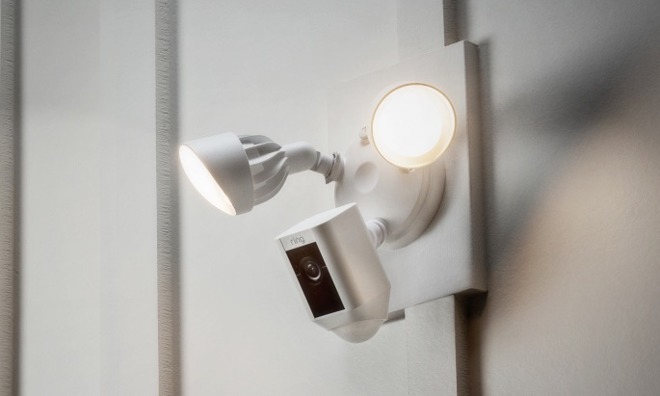
The Consumer Electronics Show (CES) is officially underway tomorrow, but plenty of companies have made announcements about new products that will be of interest to fans of Apple. We have info about two of those products lines today, as well as about how Apple has acquiesced to the Communist government of China in removing The New York Times apps from the Chinese App Store:
- Now you can toast bread, make coffee, and gaze into a connected mirror, all of these devices coming from Griffin Technology
- Ring announces the Floodlight Cam, an outside security light, camera, and siren that works with the Ring app
- China doesn’t like the NYT’s coverage, so they’ve ordered Apple to stop carrying the NYT apps
The text version of the podcast can be viewed below. To listen to the podcast here, click the play button on the player below.
Text Version
Hi, this is Steve Sande for Apple World Today, and this is the AWT News Update for January 4, 2017.
Connected appliances are nothing new; the Belkin WeMo product line has included an app-controllable Crock Pot Slow Cooker and a Mr. Coffee coffeemaker for some time. Now a new entrant into the smart home market — Griffin Technology — has announced a few products that you’ll want to get in order to be at the cutting edge of connected appliances. First, the $100 Connected Toaster uses a companion iOS app to let users set temperature, bread type, darkness, and specify gluten-free breads. The $100 Connected Coffee Maker is a 12-cup drip machine that lets users adjust coffee strength and set timers using the app. Finally, if you have deep pockets, the $1,000 Connected Mirror displays time, weather and status messages, and users can customize exactly what information appears on the mirror. Griffin also announced two new charging accessories, the $40 PowerBlock Beacon and $30 PowerJolt Beacon. These devices remind users to plug in their devices before they run out of power, while Bluetooth and iOS app integration let users specify when they want to be reminded (like at 30% remaining power…) and receive notifications when they’re in range of the charger. Expect to see these products, announced at CES, later in the year.
The next CES announcement we heard about today that deals with app-connected home security was from Ring, the company that makes the connected Video Doorbell. The company has announced the Ring Floodlight Cam, which is a combined security camera and motion sensitive outdoor light. The camera can be used to monitor an area remotely with the Ring app or a computer, alerting the user if any activity is detected. The Ring Floodlight Cam’s motion sensors cover a full 270-degree field of view, and the detection system can add facial and object detection so that users are alerted to who or what has entered their yard. A built-in microphone and speaker lets the homeowner listen to sounds or verbally respond to intruders or visitors. The 3,000-lumen LED lights can be turned on via the app or motion, and there’s a 110-decibel siren to scare away the most determined thieves. The Ring Floodlight Cam is now available for pre-order. It will cost $249, and shipments are expected to begin in April.
There’s one very big issue with being a company that is operating in a country that has a Communist government; when the government doesn’t like something, it can shut it down. That’s the case with the New York Times news app in the Chinese version of the App Store. Apple received a request from the Chinese government to remove the app, and both the Chinese-language and English-language versions were removed on December 23rd. An Apple spokesman, Fred Sainz, said that “We have been informed that the app is in violation of local regulations. As a result, the app must be taken down off the China App Store. When this situation changes, the App Store will once again offer the New York Times app for download in China.” Apparently, nobody knows what regulation the app violated or what government agency asked Apple to remove the app, and the New York Times bureau in Beijing was never contacted by the Chinese government. A Times spokesperson said that “The request by the Chinese authorities to remove our apps is part of their wider attempt to prevent readers in China from accessing independent news coverage by The New York Times of that country, coverage which is no different from the journalism we do about every other country in the world.” Given the slanted news perspective of The New York Times, it’s not surprising that the Chinese government took offense with the app. However, it also shows how sensitive the Communist government of China is to any criticism at all.
That’s all for today; I’ll be back tomorrow afternoon with another edition of the AWT News Update.

